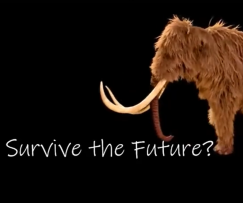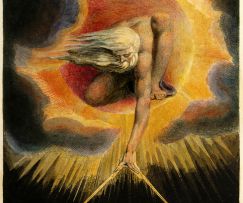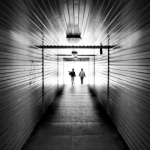By Georgi Y. Johnson
(This article is also published at the Science & Nonduality SAND website)
“The day is coming when a single carrot, freshly observed, will set off a revolution.” ~ Paul Cezanne
The polarity between spirituality and science is one of the rifts dividing the previous generation from the generation of the future. The opening of the windows of perception, through which all scientific discovery occurs, is the uncultivated key to innovation and the advance of humankind.
This is the dialogue we all have the unperceivable – the mysterious dimensions of ourselves which are beyond even the forms of perception as we know them.
In my time as a journalist living in Israel, I interviewed hundreds of scientists and innovators, from the technological pioneers that created what the modern economy has coined “The Start-up Nation”, through to Nobel Laureates. At the same time, I have been a mediator, and a teacher of inner growth with loyal to the experiential core of individual perception.
Today, after writing I AM HERE, I would postulate that many scientists from leading universities, are unwittingly the priests of the coming generation. Why? It’s all about perception and truth. Within all inquiry, between the subject and the object of contemplation, stands the human being. The method and means to liberate perception – the windows where our inner source meets the outer expression – is the living bridge to evolution.
The spiritual seeker looks inside; the scientist looks outside; but the looking itself is the master key. Any spirituality not based on individual perception, tends to be limited and controlled through patterns of beliefs which we know as religion. In this, certain kinds of experience are prescribed in advance, together with socially acceptable behaviors. The threat of non-observance is suffering. That is, religion is often upheld by the dictates of fear. As with religion, so with science.
The scientific postulates and theorems based on the past, while supportive to opening the gates of scientific discovery, become an inhibition when the scientist lacks the freedom to advance beyond those restraints. And this scientific freedom is not a political system, or a budget, it is a process of inner release from fear.
Awakened individuals are more likely to break out of dictated patterns and repeated scientific dead-ends of dogma, than those who adhere religiously to that which they have been taught. It was a result of heightened powers of perception that Nobel laureates Prof Avram Hershko and Ciechanover were able to take the unpopular move of investigating ubiquitin. Ubiquitin is a protein in living cells that is so ubiquitous (in all places at all times) that even though others knew it was there, no-one thought it notable enough for research.
In the makeshift laboratory in the old medical school in Haifa, the scientists revealed the ubiquitin system – that tags a cell for life or death – which is today critical to the development of treatments for diseases from cancer to neurodegeneration. What made them notice the ubiquitous and stand for their unfashionable research? An ability to see what others overlook – that which is directly obvious, and under the nose; and the courage to trust their own unpopular perception.
Several years later in 2011, also from Technion – Israel Institute of Technology, Prof. Dan Shechtman won a Nobel Prize for his discovery of Quasicrystals. This Israeli professor had been on sabbatical in the US some decades earlier, and observed through the new electron microscope a five pointed crystal – something which the whole canon of acceptable crystallography denied could exist. He counted the points several times, and counted them again. “What kind of animal is this?” He asked himself. When he announced his findings to the world, he was publicly ridiculed. Shechtman was a heretic in the sacred world of established crystallography. Only as quasicrystals began to be accepted as legitimate, did other scientists admit they had seen the structure too, but had failed to believe their eyes. What is the qualitative difference? A difference in the quality of individual perception, and an ability to stand for the heart of the matter, beyond fear.
Let’s take a look at these windows of perception, to see how scientific mastery arises in the holy space of the laboratory through the three layers of perception and contemplation – consciousness, awareness and emptiness.
Consciousness
The window of consciousness is connected with the waking state and the thinking mind. It is clear that an open mind critical to scientific success. Yet what is open mindedness? It is the non-attachment to thoughts, in a manner that all thoughts are relative and not absolute. Thinking as an activity takes on a playful quality as the scientist’s consciousness is free from being determined by any one idea, perspective of postulate. When entering such a scientific sanctuary, whether it be a mathematician’s work space or the laboratory of an engineer, there can often be left an atmosphere of stillness from this state of unconditional contemplation of form through the perceptive window of consciousness.
Awareness
Awareness is the perceptive window connected with feeling, vibration and love. Although it might appear otherwise, scientists equally relate to their object of contemplation through awareness – as if the object of contemplation were a sentient, living being. Science is not only about thinking. It is also very much about intuition, attraction and distraction. If the freedom and his access to inspiration can be limited by a closure of heart. A closed heart, like a closed mind, will slam shut the gates of inspiration and innovation. In science the individual reaches beyond itself in the quest for an objective contemplation of an object. Any feelings that are localized to the “person” of the scientist, come between them and direct contemplation. They cloud the view – like mud on the windscreen of a car. The heart-felt wonder inherent in the pure sentient contemplation of the objective world – whether those cells in the laboratory, those mathematical formulas, or those crystalline structures – repay with a sense of the pure beauty of humanity itself – without borders or distinctions, beyond even space and time.
Perception through Emptiness
When Einstein met the Indian mystic Tagore, he declared that this man was holding onto less beliefs than modern physics. Any agenda, fear-based belief, authority issue, or egoic self-interest is likely to sabotage pure scientific inquiry. This is the stuff that blinds the scientist, obscuring the windows of perception. Perception through emptiness, and the liberation it brings through passing through the relativity of time and space, is precisely that which allows expansion of awareness and the focus of consciousness – both critical to every inquiry. It is to cynically and dryly to see the world “for real” without believing in any reality as absolute. From this space, all innovation can flower.
“We know nothing at all. All our knowledge is but the knowledge of schoolchildren. The real nature of things we shall never know.” ~ Albert Einstein
About the Unperceivable
Beyond and behind all perception there is the existential source of perception itself. This is an area we are all ignoring – that which cannot be perceived. We take it for granted each time we go to sleep to – where? We step over millions of perceptive blinks throughout our waking day – using our consciousness and awareness as stepping stones, as if these gaps between he snapshots of information are not there. Yet, whether in the artist’s studio, school room or laboratory, all of us are constantly reaching into this inner and outer space beyond perception in order to get direction and insight; perhaps even in order to reconnect with the power source of all we are.
Imagine the pure mathematician, struggling with a problem, with all possible strategies exhausted. Where does he look for inspiration?
He closes his eyes for a moment, and lets go of all preconception and expectation; he relaxes his feelings, and releases all need, just letting the problem “BE”. She then waits – perhaps only for a microsecond. She waits, and perhaps she listens.
If the scientist is open in perception, something new arises. If consciousness is less free, then just on this invitation to the beyond, new directions often emerge while the scientist sleeps. Sooner or later – the scientific ‘prayer’ is answered – for the ones who are able to hear.
This is the dialogue we all have the unperceivable – the mysterious dimensions of ourselves which are beyond even the forms of perception as we know them. These are the dimensions in which the scientist was never a separate entity from the object of contemplation – and it is through the opening of these windows of perception to those dimensions that we will reveal our enlightened future.












